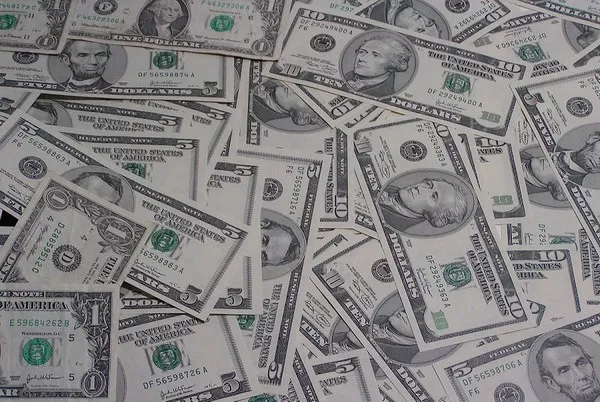The United States one-dollar bill, featuring the image of the Founding Father George Washington on its front, is one of the most widely recognized pieces of currency in the world. Yet, it’s the reverse side of the one-dollar bill that has captivated the imaginations of many for generations. There, one can find a striking image of an unfinished pyramid with a radiant eye suspended above it, enclosed within a triangle. This enigmatic design, often referred to as the “all-seeing eye” or the “eye of providence,” has fueled speculation and intrigue for years. In this article, we delve into the significance of the pyramid and the eye on the back of the one-dollar bill, exploring its origins, historical context, and various interpretations.
A Symbolic Composition
The imagery on the back of the one-dollar bill is rich in symbolism and history, reflecting the ideals and values upon which the United States was founded. This composition, designed by John Benson and engraved by Robert Scot, was introduced in 1935 and has remained largely unchanged since then. It’s composed of several distinct elements:
The Great Pyramid: At the base of the design, one can see a partially completed pyramid consisting of 13 rows of masonry blocks. The significance of this pyramid is multifaceted.
Age: The pyramid represents an ancient structure, symbolizing the enduring nature of the principles upon which the United States was built.
Unfinished: The pyramid is left intentionally unfinished, signifying that the work of building a just and prosperous nation is an ongoing endeavor.
Number of Rows: The pyramid consists of 13 rows, which is believed to symbolize the original 13 American colonies.
The All-Seeing Eye: Suspended above the pyramid is a radiant eye, often referred to as the “all-seeing eye” or the “eye of providence.” The eye is enclosed within a triangle, a shape often associated with divinity and the Holy Trinity in Christian symbolism.
Meaning: The all-seeing eye is a symbol of divine guidance, watchfulness, and protection. It represents the idea that a higher power is overseeing the nation’s actions and decisions.
Enlightenment: The eye is radiant, signifying enlightenment and knowledge. It serves as a reminder that knowledge and wisdom are essential for the success and prosperity of the nation.
The Latin Motto: Encircling the pyramid and the eye are two Latin phrases. Below the pyramid is “MDCCLXXVI,” which represents the Roman numeral for 1776, the year of American independence. Above the eye is “Annuit Coeptis,” which can be translated as “He (or Providence) has favored our undertakings.”
The Banner: At the base of the pyramid, there’s a banner that bears the Latin phrase “Novus Ordo Seclorum,” which means “New Order of the Ages” or “New World Order.” This phrase signifies the birth of a new nation and a new era of history.
Historical Context and Origins
The design on the one-dollar bill has its origins in the early 20th century when the United States sought to update its currency. The decision to include the pyramid and the all-seeing eye was influenced by several factors:
Masonic Symbolism: Some elements of the design, particularly the all-seeing eye, have connections to Freemasonry, a fraternal organization that played a significant role in the early days of the United States. Many of the Founding Fathers, including George Washington and Benjamin Franklin, were Freemasons, and Masonic symbols found their way into various aspects of American culture.
The Great Seal of the United States: The imagery on the one-dollar bill is closely related to the Great Seal of the United States. The Great Seal is an official emblem of the United States and appears on important documents such as treaties and presidential proclamations. The eye, pyramid, and other elements were part of the proposed designs for the Great Seal.
Symbolic Representation: The designers of the bill wanted to create a design that would not only represent American values and history but also convey a sense of mystery and symbolism. The all-seeing eye, in particular, was chosen to convey the idea of divine guidance and providence.
Interpretations and Controversies
Over the years, the symbolism on the back of the one-dollar bill has sparked various interpretations and controversies:
Conspiracy Theories: The mysterious nature of the design has led to the creation of numerous conspiracy theories. Some claim that the design contains hidden messages related to secret societies or global domination. It’s important to note that these theories lack credible evidence and are widely considered unfounded.
Secular Interpretation: Many scholars and historians interpret the design as a secular representation of American values. The all-seeing eye, in this view, represents the watchful and guiding presence of government, while the pyramid signifies the nation’s continuous progress and growth.
Religious Significance: Some see the design as having religious significance, with the all-seeing eye representing God’s providence and the pyramid as a symbol of spiritual ascent and enlightenment.
Historical Context: Understanding the historical context in which the design was created is crucial. It was a time when the United States was grappling with the challenges of the Great Depression and global instability. The design may have been intended to inspire hope and resilience during difficult times.
Conclusion
The pyramid and the eye on the back of the one-dollar bill are a testament to the intricate blend of history, symbolism, and artistic expression that characterizes American currency. While interpretations and controversies abound, the core message remains one of enduring values, divine guidance, and the pursuit of a brighter future. These symbols serve as a reminder that the story of the United States is one of continuous growth, enlightenment, and the quest for a more perfect union.


